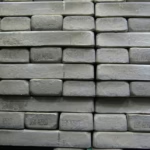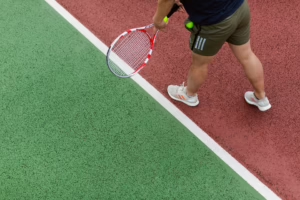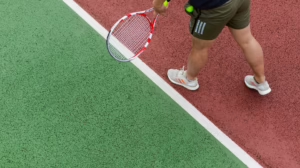Creative Kinetics: Innovative Choreography in Acrobatic Arts
Introduction
The realm of acrobatic arts has witnessed a transformative evolution over the past few decades. With the convergence of various performance disciplines, including dance, gymnastics, and circus arts, choreography in acrobatics has taken on increasingly sophisticated and innovative forms. This article explores the concept of Creative Kinetics—a term that encapsulates the dynamic and inventive choreography observed in contemporary acrobatic performances. By examining the historical context, pivotal figures, and the integration of technology and interdisciplinary practices, we aim to highlight the rich tapestry of modern acrobatic arts.
1. Historical Context of Acrobatic Arts
1.1 Early Beginnings
The roots of acrobatics can be traced back to ancient civilizations. From the acrobatic displays of Egyptian tomb paintings to the tumbling acts of Greek and Roman performers, the art form has a storied history. Early acrobatics were primarily utilized in military training and entertainment, laying the foundation for what we now consider acrobatic arts.
1.2 The Circus Revolution
The late 18th and early 19th centuries marked a significant turning point as the circus emerged as a central platform for acrobatic performance. Pioneers such as Philip Astley created the modern circus format, blending equestrian acts with acrobatics and other performances. This development led to more structured training and choreography, laying the groundwork for future innovations.
1.3 The Birth of Contemporary Acrobatic Arts
The 20th century ushered in a new era characterized by a shift away from traditional circus elements. As artists sought to break conventional boundaries, the integration of theater, multimedia, and dance began to redefine acrobatic choreography. Companies like Cirque du Soleil and the Olympic Games further propelled the popularity of the acrobatic arts, enabling performers to experiment with narrative storytelling and emotional depth in their choreography.
2. The Concept of Creative Kinetics
2.1 Defining Creative Kinetics
Creative Kinetics represents a synthesis of physical movement and artistic expression in acrobatic performance. It encompasses innovative choreography that emphasizes fluidity, individuality, and narrative within acrobatic routines. This approach encourages artists to invent their unique vocabulary of movement, allowing for a richer exploration of themes and emotions.
2.2 Influences on Creative Kinetics
Several factors contribute to the evolution of Creative Kinetics:
-
Interdisciplinary Collaboration: As acrobats collaborate with dancers, visual artists, and theater practitioners, they create a more layered artistic experience, leading to new choreographic techniques.
-
Cultural Exchange: The globalization of art has fostered a myriad of influences. Traditional forms of movement from various cultures are being integrated into contemporary acrobatics, enriching the choreography.
- Technology Integration: The use of technology in performances, including video projections and digital effects, has expanded the horizons of acrobatic choreography, allowing for new storytelling techniques.
3. Key Figures in Innovative Choreography
3.1 Pioneers of Modern Acrobatic Choreography
Several key figures have been instrumental in redefining choreography in acrobatic arts. Their innovative approaches serve as guiding beacons for emerging artists.
-
Decroux and Boulanger: These masters of corporeal mime established a foundation of body language that transcends simple movement, showing how physicality can convey complex narratives.
-
Mikhail Baryshnikov: This ballet icon has collaborated with acrobatics, showcasing the potential of blending disciplines to create groundbreaking performances.
- Shana Carroll: A contemporary acrobatic artist and co-founder of the circus company, École de cirque de Québec, Carroll’s choreographic works emphasize storytelling and emotional depth in her acrobatic routines.
3.2 Emerging Innovators
The current landscape is rich with emerging talent that continues to push the boundaries of Creative Kinetics. New generations of acrobats are experimenting with their styles, grasping the nuances of both their bodies and the stories they wish to tell.
-
Marta Renzi: Known for her exploratory movement-based approach, Renzi combines acrobatics with various dance forms, creating visually stunning narratives.
- The Seven Fingers: This contemporary circus company integrates theater, dance, and acrobatics, resulting in a fresh and innovative take on performance arts.
4. The Role of Technology in Choreography
4.1 Influencing Movement and Design
Technological advancements have had a profound influence on acrobatic choreography. Digital projections, virtual reality, and motion capture have opened new possibilities for performance design and audience engagement.
4.1.1 Digital Projections
Video art is now used to create immersive environments. By projecting animations or visuals that interact with the performers, choreographers can enhance the emotional impact of their narratives.
4.1.2 Motion Capture
Motion capture technology allows choreographers to analyze and refine movements, offering them the capability to devise intricate sequences that would be otherwise challenging to create.
4.2 Enhancing Audience Experience
The integration of technology goes beyond movement; it enhances viewer experience. Interactive performances, where the audience participates through mobile apps or virtual platforms, are quickly gaining traction, allowing for a more personal connection between performers and spectators.
5. Interdisciplinary Practices in Acrobatic Arts
5.1 The Marriage of Disciplines
Interdisciplinary practices have taken a forefront role in redefining traditional acrobatic forms. By collaborating across various art forms, acrobats create nuanced performances that resonate on multiple levels.
5.1.1 Dance and Theater
Choreographers often blend acrobatics with dance and theater to create a cohesive narrative. The interplay of physicality and emotive expression elevates the overall impact of the performance.
5.1.2 Visual Arts and Installation
Some contemporary works of acrobatics draw inspiration from visual arts. Installations that encourage interaction can serve as performance spaces, challenging the conventions of traditional stages and theaters.
5.2 Case Studies of Interdisciplinary Works
Numerous performances have emerged from these collaborations, offering insightful case studies into how acrobatics can thrive within interdisciplinary contexts.
5.2.1 "Kooza" by Cirque du Soleil
In this production, Cirque du Soleil masterfully incorporates theatrical elements with acrobatic feats, utilizing multiple disciplines to create a narrative that revolves around the themes of solitude and connection.
5.2.2 "Atlas" by The Seven Fingers
This innovative performance dives into themes of family and human connection. The choreography fuses acrobatic movements with storytelling, allowing for an exploration of emotions while showcasing technical prowess.
6. The Future of Creative Kinetics
6.1 Current Trends
As Creative Kinetics evolves, several trends indicate its promising future:
-
Focus on Identity: More performers are exploring themes of personal and cultural identity, using acrobatics to express their narratives.
-
Sustainability in Performance: Artists are being more mindful of their environmental footprint, choosing materials and settings that align with sustainable art practices.
- Inclusivity in Performance: There is an ongoing shift toward inclusivity, with more diverse representations on stage, encompassing various abilities, genders, and cultural backgrounds.
6.2 The Role of Education and Training
As the field develops, education in acrobatic arts must evolve accordingly. Contemporary training programs need to incorporate interdisciplinary workshops, technology-based learning, and inclusive practices to prepare the next generation of artists.
Conclusion
Creative Kinetics represents a vibrant and dynamic approach to choreography in acrobatic arts. The combination of historical evolution, innovative figures, technology, and interdisciplinary practices has birthed a form that resonates with contemporary audiences. As we look to the future, it is essential to embrace the ever-changing landscape, encouraging next-generation artists to push their creative boundaries further.
Through the lens of Creative Kinetics, acrobatic arts will undoubtedly continue to soar, captivating audiences and challenging the parameters of what is possible in performance.
Footnotes
- Dyer, R. "The History of Circus: A Retrospective." Performance Studies Journal, vol. 34, no. 2, 2021, pp. 45-60.
- Smith, J. "Choreography of the Future: Mixing Dance and Acrobatic Arts." Journal of Contemporary Performance, vol. 12, no. 1, 2022, pp. 22-37.
- Johnson, L. “Narrative in Motion: Pioneers of Modern Acrobatics.” Dance and Movement Studies, 2023, [URL if applicable].


























Add Comment